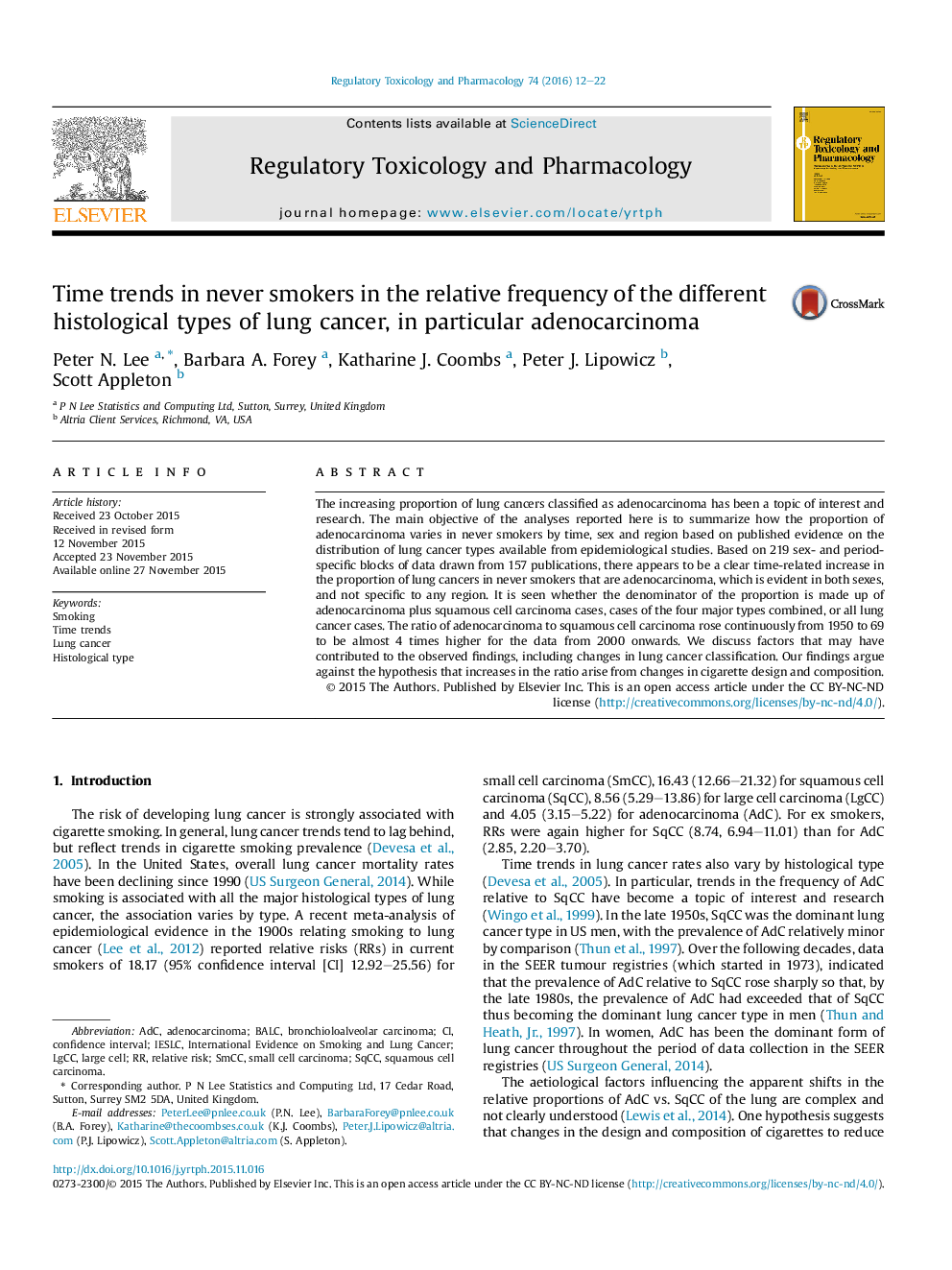| Article ID | Journal | Published Year | Pages | File Type |
|---|---|---|---|---|
| 5856074 | Regulatory Toxicology and Pharmacology | 2016 | 11 Pages |
Abstract
The increasing proportion of lung cancers classified as adenocarcinoma has been a topic of interest and research. The main objective of the analyses reported here is to summarize how the proportion of adenocarcinoma varies in never smokers by time, sex and region based on published evidence on the distribution of lung cancer types available from epidemiological studies. Based on 219 sex- and period-specific blocks of data drawn from 157 publications, there appears to be a clear time-related increase in the proportion of lung cancers in never smokers that are adenocarcinoma, which is evident in both sexes, and not specific to any region. It is seen whether the denominator of the proportion is made up of adenocarcinoma plus squamous cell carcinoma cases, cases of the four major types combined, or all lung cancer cases. The ratio of adenocarcinoma to squamous cell carcinoma rose continuously from 1950 to 69 to be almost 4 times higher for the data from 2000 onwards. We discuss factors that may have contributed to the observed findings, including changes in lung cancer classification. Our findings argue against the hypothesis that increases in the ratio arise from changes in cigarette design and composition.
Keywords
Related Topics
Life Sciences
Environmental Science
Health, Toxicology and Mutagenesis
Authors
Peter N. Lee, Barbara A. Forey, Katharine J. Coombs, Peter J. Lipowicz, Scott Appleton,
